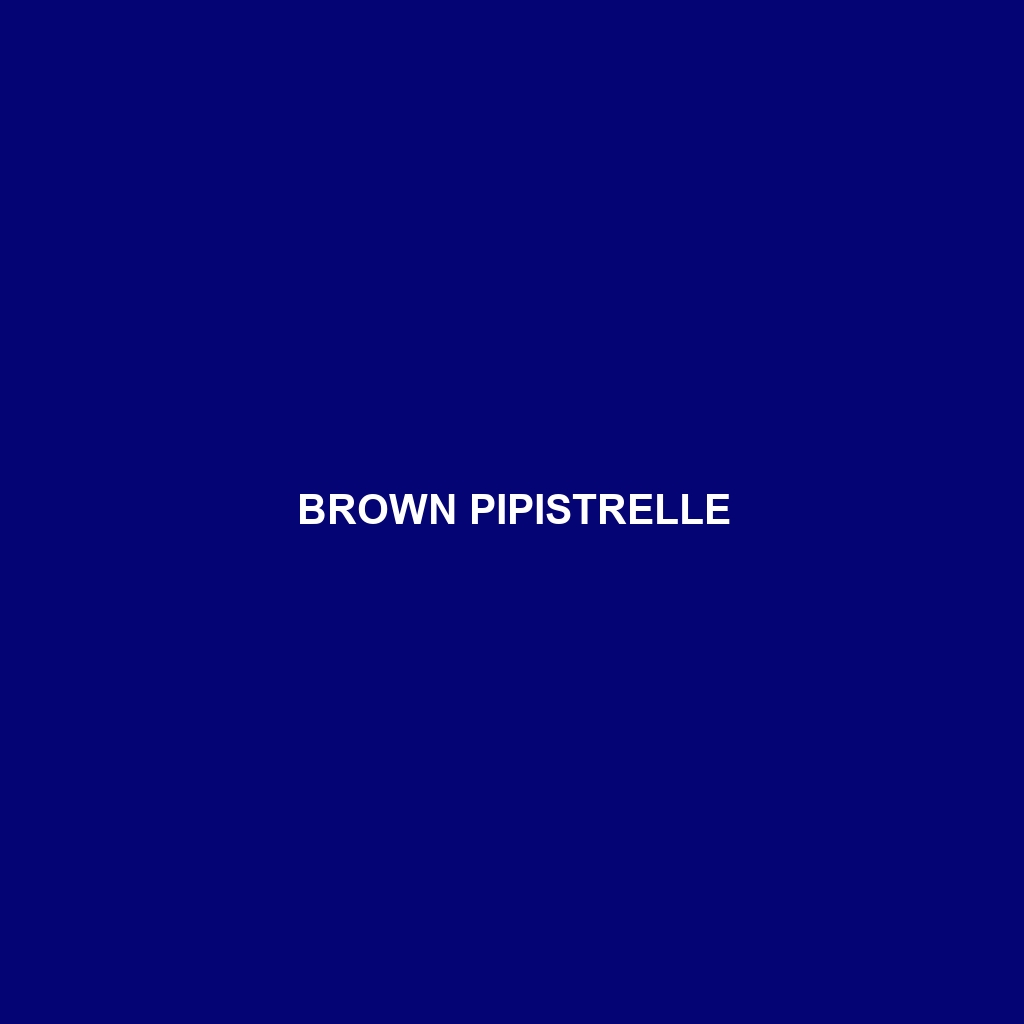Brown Pipistrelle
Common Name: Brown Pipistrelle
Scientific Name: Pipistrellus nathusii
Habitat
The Brown Pipistrelle is primarily found in a variety of habitats throughout Europe and parts of Asia. It typically favors woodlands, parks, and urban areas that have ample foliage and nearby water sources. This bat species thrives in environments with a rich abundance of insects, making it more prevalent in areas such as mixed forests and wetlands. It is particularly common in central and southern Europe, as well as some regions of the British Isles.
Physical Characteristics
The Brown Pipistrelle is a small bat species, measuring about 3 to 4 inches (8 to 10 cm) in body length with a wingspan of approximately 9 to 10 inches (23 to 25 cm). Characterized by its brownish fur, which may vary from light to dark shades, this species has a distinctively pointed snout. Its ears are notably large and rounded, allowing for effective echolocation, a critical adaptation for hunting prey in the dark. Another distinctive feature is its relatively short and broad wings, which enhance its maneuverability while flying.
Behavior
Brown Pipistrelles exhibit nocturnal habits, primarily emerging at dusk to hunt for insects. They are known for their quick, agile flight, which enables them to capture aerial insects mid-flight, a behavior that interests many wildlife enthusiasts and researchers alike. During the day, these bats roost in tree hollows, under bridges, or in buildings, often forming small colonies. They are social creatures, frequently seen foraging in groups, which can attract research interest into their social dynamics and communication techniques.
Diet
The diet of the Brown Pipistrelle consists mainly of small arthropods, particularly moths, beetles, and flies. These bats are proficient insectivores, utilizing echolocation to detect and capture their prey during nocturnal foraging. They generally hunt over water and in open spaces, showcasing remarkable agility. Their feeding habits contribute significantly to controlling insect populations in their habitats, emphasizing their ecological importance.
Reproduction
Brown Pipistrelles typically breed once a year, with mating occurring in late summer and gestation lasting about 6 to 8 weeks. Females usually give birth to one or two pups in June or July, which they care for until they are able to fly and forage independently. The young bats are born with a layer of fur and are blind at birth, relying on their mother’s milk for nourishment until they can transition to a diet of insects.
Conservation Status
The current conservation status of the Brown Pipistrelle is classified as “Least Concern” according to the International Union for Conservation of Nature (IUCN). However, populations are affected by habitat loss and changing land use practices, which raises concerns among conservationists. It is crucial to monitor their populations and habitats to ensure their continued survival.
Interesting Facts
One intriguing fact about the Brown Pipistrelle is its ability to communicate through a range of vocalizations, especially during mating season when males emit calls to attract females. Additionally, these bats engage in a fascinating behavior known as “social grooming,” which strengthens colony bonds. Their ability to consume large quantities of insects makes them vital for maintaining healthy ecosystems, and they can eat up to half their body weight in insects each night!
Role in Ecosystem
The Brown Pipistrelle plays a significant role in ecosystems as a natural pest control agent. By preying on a variety of insects, they help maintain the balance within their habitats, preventing outbreaks of pest species. Furthermore, their presence indicates a healthy environment, making them essential indicators of biodiversity. Their interactions with other species, alongside their ecological contributions, highlight their importance in sustaining ecological harmony.
